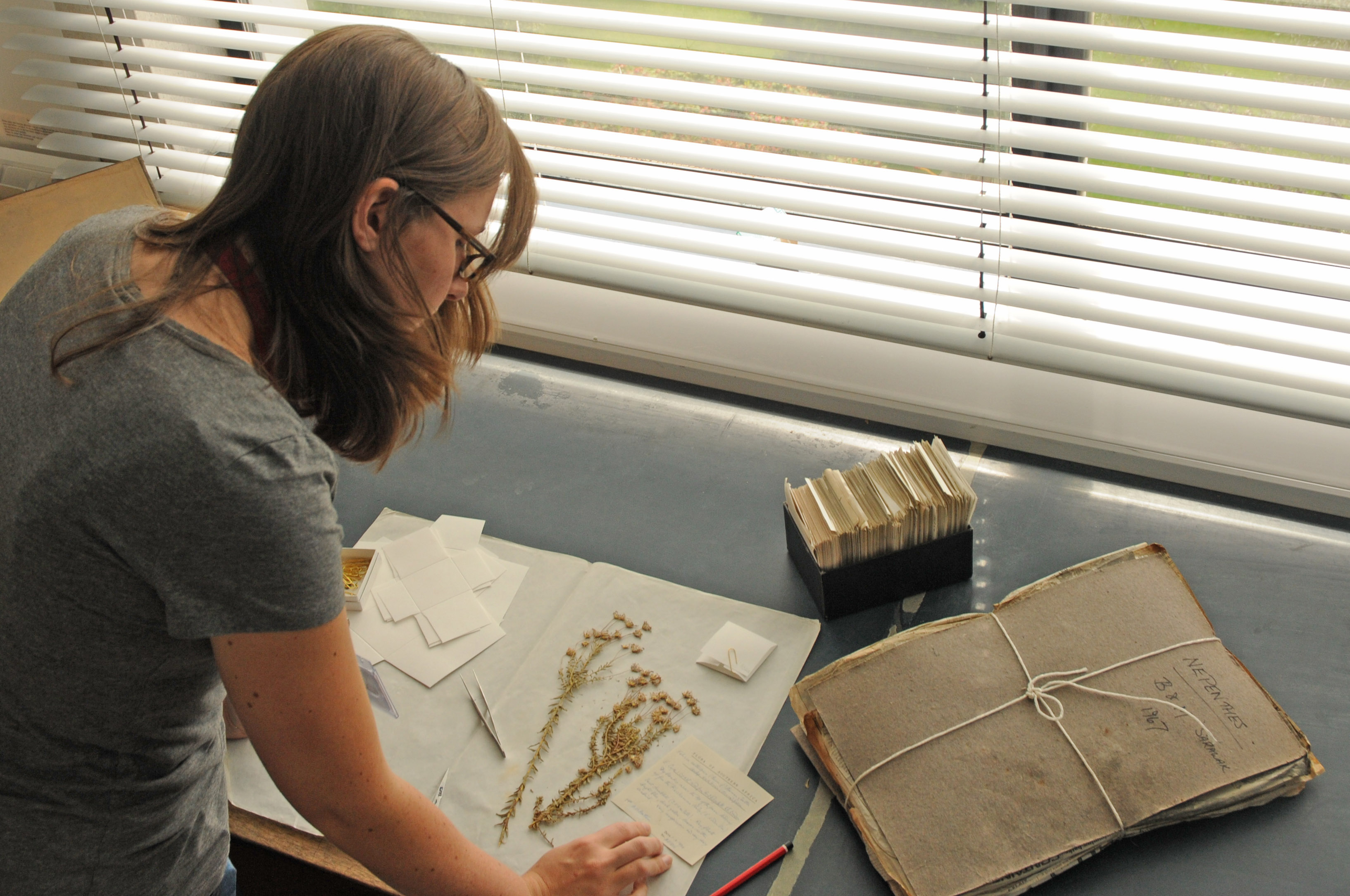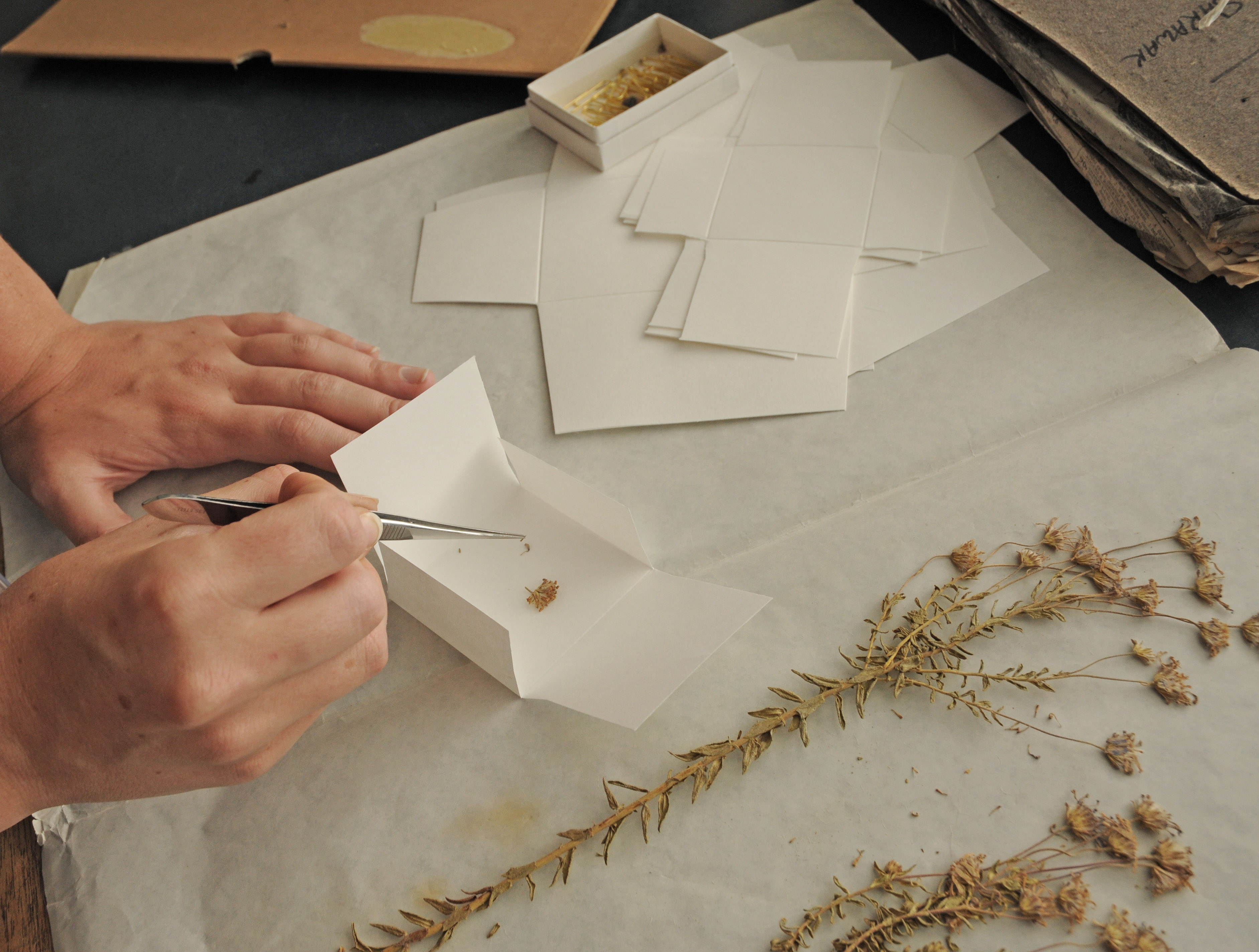This Blog post was written by Olivia Nippe, a PhD intern who spent three months working in the RBGE Herbarium:
The RBGE herbarium contains over 3 million pressed plant specimens that are systematically filed according to evolutionary relationships. Such an establishment enables researchers to access vast amounts of material that could not possibly be studied in the field at any one time and place. Comparative studies are thus made possible over not only large geographical areas, but ecological time spans of up to 200-300 years, and even with now-extinct species. The collection is added to every year by field expeditions carried out by botanists worldwide.
When an expedition comes to an end the discoveries need not. So what happens to the plant specimens that a botanist collects in the wild, over the course of a lifetime, and just how important is it that we preserve these specimens for the years to come?
The answer to this question is of course synonymous with that of another: How do we process newly collected specimens that are sent to the Herbarium in order to make them accessible to our researchers, and how can such specimens be used in the future? There are many steps to be taken before the specimens that we receive at the Royal Botanic Gardens here in Edinburgh make it to the herbarium cabinets. As a volunteer at RBGE I have spent my time working through the extensive collection of renowned plant taxonomist Brian ‘Bill’ Burtt, obtained during his expeditions to Sarawak on the island of Borneo. The samples have been carefully dried and preserved between pages of newspaper by their collector and possess a wealth of information both about the physical characteristics of the plant, and in its DNA which will remain intact for many years to come.

Olivia looking at a Bill Burtt specimen and collection information on the collectors label. To the right is a bundle of specimens in newspaper waiting to be processed.
When collecting in the field, a collector will make several duplicate specimens for each plant and these will be distributed to different institutes, including a herbarium in the country of collection. It can sometimes take some time for this to happen and this project worked through one such collection. From the plant material available we select a specimen to mount to show the diagnostic characters, and where possible save extra leaf material, flowers and/or fruit in an accompanying paper envelope, or ‘capsule’.
This ensures that not only are researchers able to get the best possible impression of the plant’s morphological features, but that they have access to sufficient material to extract and analyse its DNA for use in studies of plant phylogeny, the study of evolutionary relationships between species. Intact fruit may be dissected and flowers can be rehydrated from a sample in the capsule to provide further indication of plant structure, as such characteristics can prove to be essential when determining species identity. When mounted it will be securely taped, glued and/or stitched to a durable card backing (to learn more about mounting herbarium specimens click here) and placed into the herbarium cabinets.All of the material we use to affix the specimens is of archival quality and will enable the preservation of our specimens for hundreds of years.
While the herbarium serves as a historical reference library, the increasing ease of whole-genome sequencing means that these specimens also have the potential to offer new insight to evolutionary branching patterns. With even textbook examples of interspecies phylogeny such as those of Darwin’s finches being revised in light of new sequencing data, these plant specimens have much more to tell us long after they have been discovered.
Whilst working on this project Olivia processed 852 specimens from 101 different plant families. The specimens were collected in Sarawak, Bolivia, Namibia and South Africa. 374 of the specimens will be mounted and incorporated into the RBGE herbarium . 478 will be distributed to the following organisations: Sarawak Forest Department (SAR), Research Centre for Biology, Indonesia (BO), Brunei Forestry Centre (BRUN), Naturalis, Netherlands (L), Royal Botanic Gardens, Kew (K), Singapore Botanic Gardens (SING), Forest Research Institute, Malaysia (KEP) and the South African National Biodiversity Institute (PRE).

